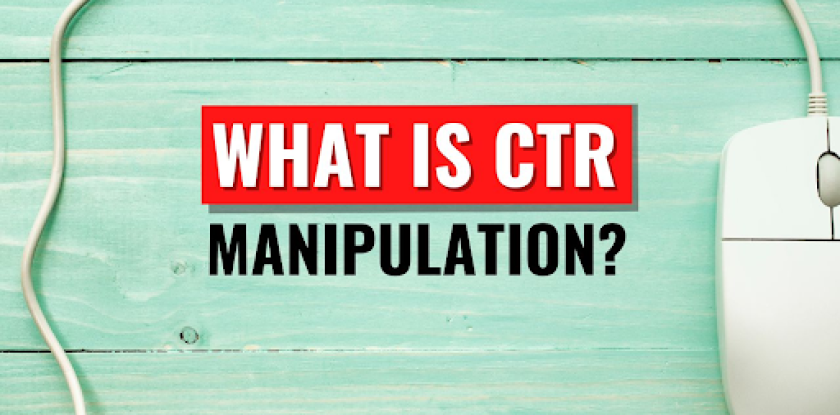Crafting a Reliable CTR Manipulation Press Release for Presence
Unlocking the Secrets of CTR Adjustment for Better ROI
The control of click-through rates (CTR) presents an engaging chance for marketing professionals seeking to improve return on investment (ROI) From A/B testing to data analysis, the techniques for improving CTR are varied and impactful.
Comprehending Click-Through Price
In electronic advertising and marketing, recognizing Click-Through Price (CTR) is essential for assessing the efficiency of online projects. CTR is a key efficiency metric that measures the portion of users that click a certain link contrasted to the overall variety of customers that view the material. GMB CTR Manipulation. It is calculated by dividing the variety of clicks by the number of perceptions, after that multiplying by 100 to express it as a percent
A higher CTR shows that the material is involving and relevant to the audience, while a reduced CTR might recommend that the web content is not resonating or that the telephone call to activity is ineffective. CTR acts as an indication of the imaginative aspects in marketing, consisting of headlines, photos, and total messaging.
Understanding CTR likewise assists in identifying fads with time, allowing online marketers to improve their techniques based on performance data. By evaluating CTR throughout numerous channels-- such as email projects, social media sites ads, and search engine results-- marketing experts can obtain understandings right into audience behavior and choices. Eventually, CTR is a fundamental metric that can notify choices to maximize project efficiency and enhance general roi (ROI)
Importance of CTR in Marketing
How can marketers utilize Click-Through Rate (CTR) to enhance their project efficiency? CTR is a critical metric that measures the percentage of users who click a promotion or web link compared to the overall variety of individuals that view it. A high CTR shows that a project resonates well with its target market, properly capturing their passion and motivating action.
Comprehending the relevance of CTR enables marketing professionals to assess the importance and appeal of their messaging, imaginative possessions, and overall method. Examining CTR not just provides insights into individual interaction however additionally help in recognizing areas for improvement. Marketing experts can utilize CTR data to improve their targeting, making certain that promotions get to the most suitable audience sectors.
A well-optimized CTR can lead to lower costs per click and boosted return on investment (ROI) Inevitably, tracking and enhancing CTR is integral for online marketers seeking to maximize their campaign performance and attain lasting development in a competitive landscape.
Strategies for CTR Optimization

One more efficient method is A/B testing, where variants of advertisement duplicates, pictures, or calls-to-action are tested to identify which versions yield greater CTRs. This data-driven technique permits companies to refine their messaging based upon genuine customer habits.
Making use of eye-catching visuals can likewise boost CTR, as enticing graphics or videos have a tendency to attract customers' attention better than text alone (GMB CTR Manipulation). Additionally, using urgency or shortage techniques-- such as limited-time offers-- can develop a feeling of necessity, engaging individuals to act promptly
Moreover, optimizing landing web pages for mobile phones is critical, as a raising variety of users accessibility content via smartphones. A smooth user experience fosters involvement and encourages clicks. Lastly, leveraging social proof, such as testimonials and evaluations, can construct trust fund and enhance the possibility of clicks, inevitably driving far better ROI.
Analyzing CTR Data
Understanding CTR information is important for marketing experts intending to boost their campaigns and make best use of return on financial investment. Evaluating this data involves looking at click-through prices throughout numerous networks, ad layouts, and target demographics. By segmenting CTR information, marketing professionals can identify which components resonate with audiences and which require optimization.
A comprehensive examination of CTR trends over time can expose patterns that educate future techniques. As an example, seasonal variations might affect involvement, suggesting the demand for tailored messaging throughout top periods. Additionally, contrasting CTR information versus this website sector criteria can help evaluate campaign performance, guiding adjustments to improve efficiency.
Marketing professionals should likewise consider variables influencing CTR, such as ad positioning, copy, and aesthetic components. A/B screening different variations enables a much deeper understanding of what drives clicks. Incorporating CTR information with individual habits analytics supplies insights into the general consumer journey, highlighting chances for further optimization.
Gauging ROI Influence
Determining the influence of click-through rates on return on financial investment (ROI) is important for marketing experts looking to confirm their approaches. By quantifying the connection between CTR and ROI, companies can recognize which projects effectively drive income and maximize their advertising efforts appropriately.
To start this analysis, one must develop a clear standard for ROI, normally determined as the net profit separated by the total investment. Once the baseline is set, marketing teams can examine CTR metrics from different campaigns, keeping in mind how adjustments in CTR impact overall sales and revenue generation.
Advanced analytics devices can better enhance this procedure by segmenting information across various networks, target market demographics, and campaign types. This granularity enables marketing professionals to identify particular variables that either favorably or adversely influence ROI.
In addition, it is necessary to consider the lag effect, where increased CTR might not immediately convert into greater sales. Tracking efficiency over time can give understandings right into longer-term effect on ROI.
Ultimately, a comprehensive understanding of how CTR control changes ROI encourages online marketers to refine their methods, guaranteeing optimal appropriation of sources and maximized economic returns.
Conclusion
